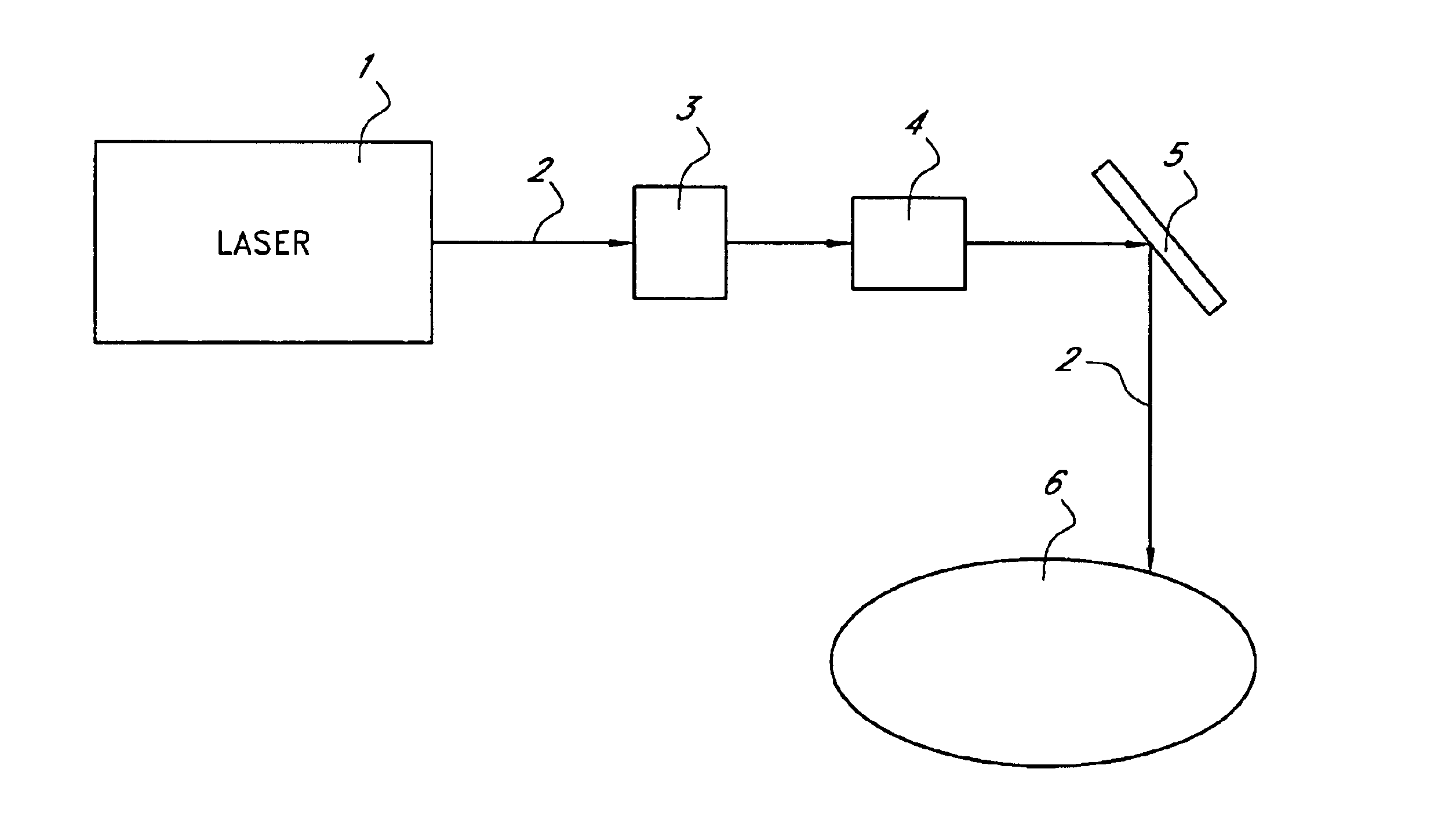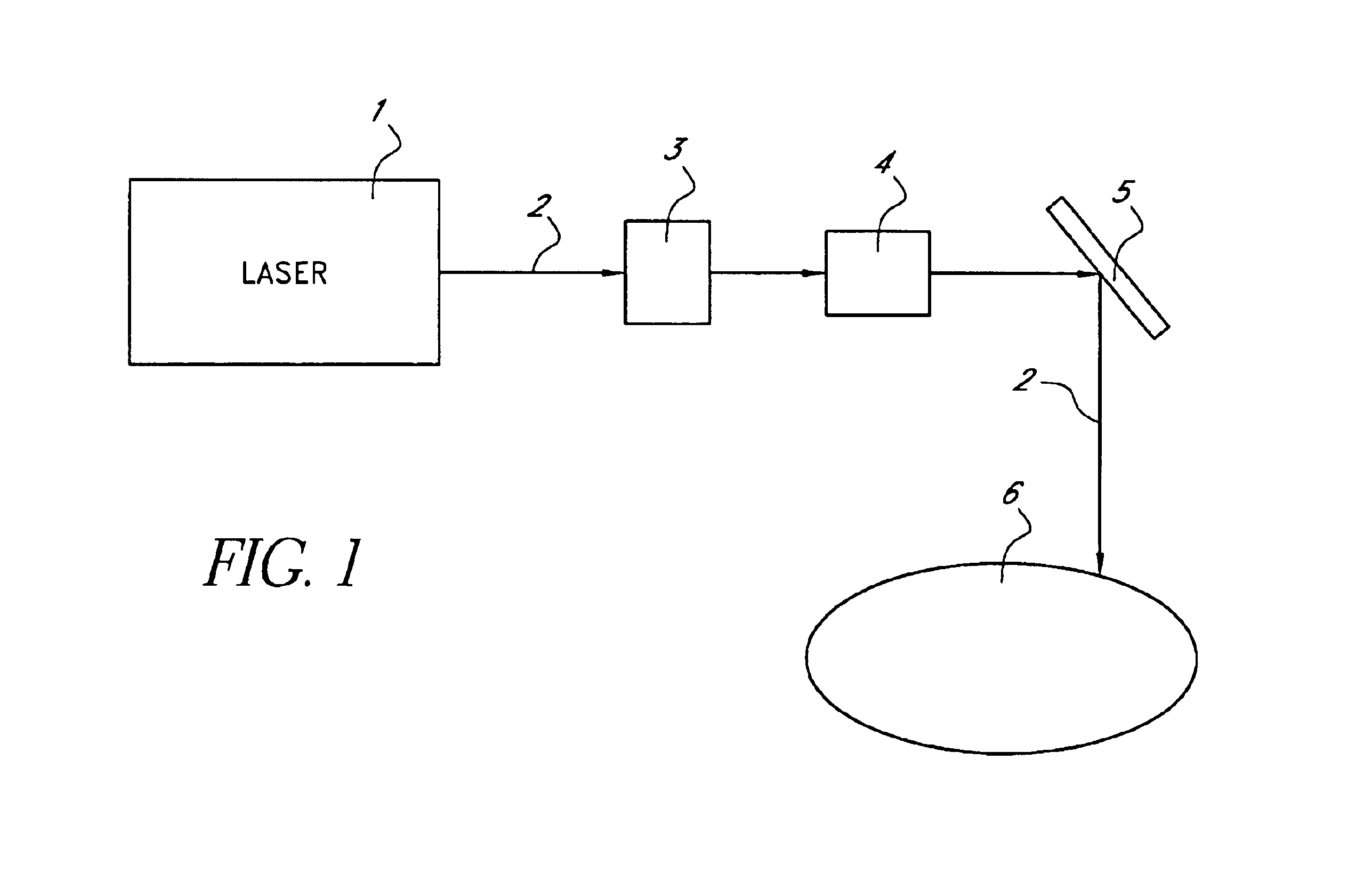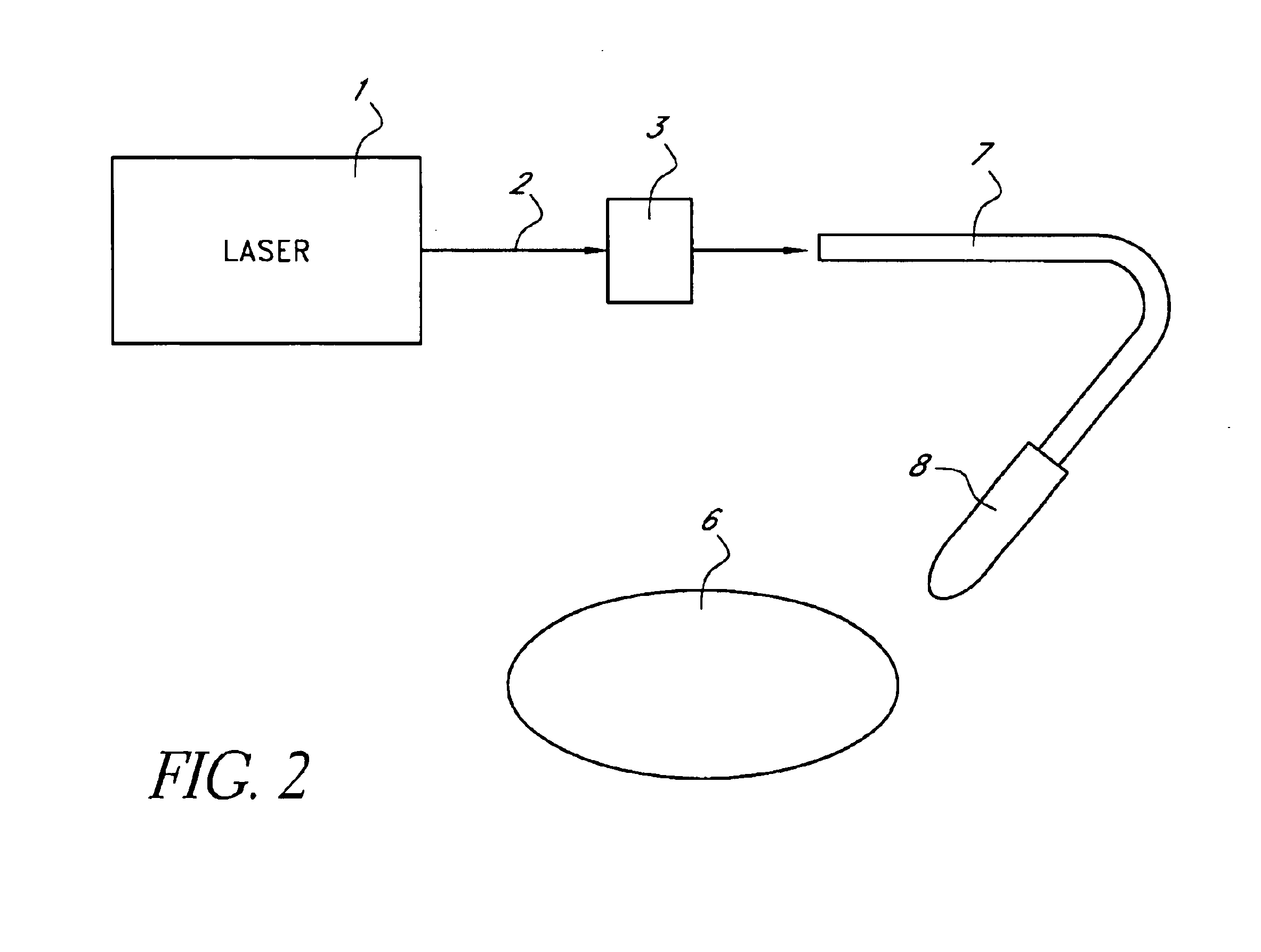Methods and apparatus for presbyopia treatment using a scanning laser system
a scanning laser and presbyopia technology, applied in the field of presbyopia apparatus and methods, can solve the problems of inability to present any details or practical methods or laser parameters for presbyopia correction, the limitations of the above-described prior arts, and the inability to use them
- Summary
- Abstract
- Description
- Claims
- Application Information
AI Technical Summary
Benefits of technology
Problems solved by technology
Method used
Image
Examples
Embodiment Construction
FIG. 1 of the drawings is a schematic of a laser system having an ablative laser 1 producing a laser beam 2 of a predetermined wavelength and focused by a lens 3 which is directed onto a scanner 4 and then reflected by a mirror 5 onto the cornea 6 of a patient's eye. The scanner 4 consists of a pair of motorized coated mirrors with a 45 degree highly reflecting both the ablative laser beam 2. The mirrors 4 is highly reflective to the wavelength of the beams 2. The focusing lens 3 has a focal length of about 10-100 cm such that the spot size of the ablative laser beam 2 is about 0.1-1.0 mm on the corneal surface. In FIG. 1, the ablative laser beams 2 is scanned by the scanner 4 over the corneal sclera area of the eye 6 to generate predetermined patterns. An alternative embodiment of the present surgical laser is to use a cylinder lens to focus the ablative laser 1 to a line spot with a size of 0.1-0.8 mm.times.3.0-5.0 mm on the corneal surface to eliminate the need of scanner 4. Furt...
PUM
 Login to View More
Login to View More Abstract
Description
Claims
Application Information
 Login to View More
Login to View More - R&D
- Intellectual Property
- Life Sciences
- Materials
- Tech Scout
- Unparalleled Data Quality
- Higher Quality Content
- 60% Fewer Hallucinations
Browse by: Latest US Patents, China's latest patents, Technical Efficacy Thesaurus, Application Domain, Technology Topic, Popular Technical Reports.
© 2025 PatSnap. All rights reserved.Legal|Privacy policy|Modern Slavery Act Transparency Statement|Sitemap|About US| Contact US: help@patsnap.com



